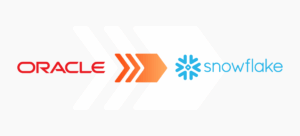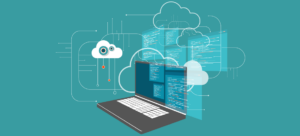
Database migrations can feel like a gamble. And with any high-stakes, enterprise-level bet, making the wrong move comes with serious consequences. Costs, credibility, compliance, customer trust and competitive advantage are all on the line.
Would you place a bet blindfolded? Probably not. But if your organization is performing an Oracle to Snowflake migration without a clear understanding of your data landscape, that’s exactly what you’re doing.
What’s the biggest risk of an Oracle to Snowflake migration?
Hidden complexity. In most enterprises, Oracle environments have been around for decades. Over time, they accumulate layers of business logic, views, stored procedures, naming conventions and undocumented workarounds. Much of this logic is critical to financial reporting, compliance and day-to-day operations. But it’s rarely well documented, and often only understood by a few employees.
When you move that environment to Snowflake without fully understanding how everything fits together, you introduce serious risk. Business rules may get lost in translation. Data dependencies can break. Legacy logic that supports audit trails, tax reporting or operational forecasts may be omitted or misapplied in the new environment.
This can result in reports that don’t reconcile, incomplete regulatory submissions, expensive re-work, lost user confidence and lost data trust. It’s how teams end up in crisis mode, trying to trace issues across systems they no longer fully control. What started as a tech initiative can quickly become a board-level concern.
Why does data modeling matter when moving Oracle data to Snowflake?
Because guessing isn’t a strategy. Data modeling gives you a full view of your current architecture: how data is structured, how it’s related and how it’s actually used in the business. Think of it like counting cards before you play the hand. You’re not changing the game, but you are gaining knowledge to avoid losing.
With a data model in hand, you’re no longer crossing your fingers and hoping everything just “works” once it lands in Snowflake. You can untangle schemas, surface forgotten logic, identify redundant structures and retire what no longer serves the business, all before you move.
How does data modeling reduce cloud migration risk?
It doesn’t leave critical business logic to luck. Let’s say you’ve skipped the modeling step. You’re halfway through your migration. Suddenly, your finance team flags that quarterly earnings reports no longer reconcile. Your compliance lead can’t track data lineage. The CEO is looking at a dashboard that says revenue dropped to zero, and it’s not a sales issue. All because a key dependency or transformation didn’t survive the trip from Oracle to Snowflake.
With a model in place, this scenario looks very different. You know which views drive which reports. You understand which stored procedures house critical calculations. You’ve mapped Oracle schemas to Snowflake structures intentionally, not by trial and error.
What happens when you skip data modeling?
You’re basically hoping the cards fall in your favor. They won’t. Here’s what I’ve seen, again and again, when organizations skip data modeling.
You “lift and shift” everything into Snowflake, only to find the data warehouse still looks and acts like Oracle, just with higher compute bills. Your reports don’t match. Your analysts start building workarounds. Your data team goes into constant triage mode.
Meanwhile, business leaders wonder why the shiny new cloud platform feels… kind of like the old one, only worse. And let’s not even talk about the moment the auditors come knocking and ask for lineage documentation.
Skipping modeling is like hitting on 18 and hoping for a 3. Technically possible. Practically disastrous.
Can data modeling help after you move to Snowflake?
Yes, and it’s your best bet to keep winning long after your Oracle to Snowflake migration. Because once the migration is complete, the work isn’t over. Now you need to optimize for performance, cost and scalability.
Without a clear model, you’re guessing why queries are slow or why data costs are spiking. With a model, you can see exactly where you’ve got bloated joins, duplicated data or inefficient structures.
Modeling helps you tune your environment like a pro card shark counting the odds. You’ll understand the flow of data so you can reduce noise, streamline transformations and scale intelligently.
Why is now the time to act?
Because standing still is its own kind of gamble, and it rarely ends well. The longer you wait to model, the more complex your data environment becomes and the more risk you absorb. You’ll also fall further behind competitors who’ve already modernized and are moving faster with AI, real-time insights and cross-functional data products.
You can’t build any of that on a shaky foundation. Not securely and not at scale. Oracle isn’t getting easier to manage and your business leaders aren’t getting more patient. This is your moment to make the leap and make it clean.
What’s the smarter play?
Model early. Model often. And use the model as your single source of truth.
Here’s how I approach it every time:
Before migration, I model the Oracle environment to see what I’m actually dealing with. This isn’t just technical inventory but more of a strategy exercise. What do we keep? What do we retire? What’s business-critical?
During migration, I use the model to guide design decisions. This is where we modernize, not replicate, the legacy system. Every table, every relationship, every rule is intentional. Leverage the modeling solution to automate the schema transformation and deployment to Snowflake.
After migration, I update the model to reflect the new world. Now it becomes a living artifact, supporting governance, optimization and ongoing development agility.
The model is the only bet you can make that reduces risk and increases your odds of long-term success.
Conclusion
Moving from Oracle to Snowflake is a defining moment. You either emerge with a modern, flexible, AI-ready architecture, or you recreate the old mess in a new platform and wonder where all the value went.
And while every transformation comes with risk, preventable risk is unacceptable. Data modeling is how you make the unknown known, and ensure your Oracle to Snowflake migration delivers value, not volatility.
Every month you wait to untangle and modernize your Oracle environment is a month you fall further behind competitors who already have. A smart Snowflake migration starts with data modeling and the time to start is now.



